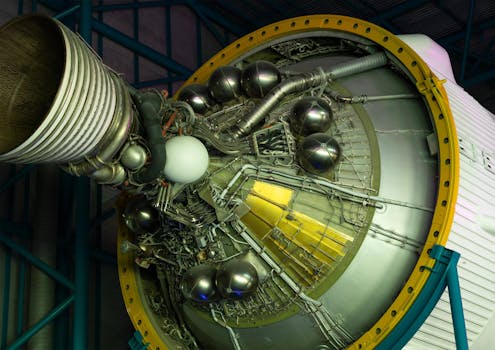Harnessing the Skies: New Technologies Transforming Satellite Communications
The satellite communications industry is undergoing a significant transformation, driven by new technologies that are enhancing the capabilities and efficiency of satellite systems. From advanced propulsion systems to innovative antenna designs, these technologies are poised to revolutionize the way we communicate through space.

Harnessing the Skies: New Technologies Transforming Satellite Communications
The satellite communications industry is on the cusp of a revolution, driven by new technologies that are transforming the way we communicate through space. For decades, satellites have played a critical role in global communications, providing connectivity to remote and underserved areas, enabling global navigation, and facilitating international communications. However, the industry has faced numerous challenges, including high costs, limited bandwidth, and inefficient systems. The advent of new technologies is poised to address these challenges, enabling faster, more efficient, and more cost-effective satellite communications.
One of the key technologies driving this transformation is the development of advanced propulsion systems. Traditional satellite propulsion systems have been limited by their high fuel consumption and limited maneuverability. However, new propulsion systems, such as electric propulsion and advanced ion engines, are being developed, which offer significant improvements in fuel efficiency and maneuverability. These systems enable satellites to maintain their position and altitude more accurately, reducing the need for costly and complex station-keeping maneuvers.
Another area of innovation is in the development of new antenna designs. Traditional satellite antennas have been limited by their size, weight, and complexity. However, new antenna designs, such as phased arrays and active antennas, are being developed, which offer significant improvements in performance and efficiency. These antennas enable satellites to transmit and receive data more efficiently, increasing the overall capacity and throughput of the satellite system. Additionally, they enable the use of higher frequency bands, such as Ka-band and Q/V-band, which offer higher bandwidth and faster data transfer rates.
The use of artificial intelligence (AI) and machine learning (ML) is also transforming the satellite communications industry. AI and ML algorithms can be used to optimize satellite operations, predict and prevent errors, and improve the overall efficiency of the satellite system. For example, AI-powered predictive maintenance can be used to identify potential issues before they occur, reducing downtime and increasing the overall reliability of the system. Additionally, ML algorithms can be used to optimize the use of satellite resources, such as bandwidth and power, enabling more efficient and effective use of these limited resources.
In conclusion, the satellite communications industry is undergoing a significant transformation, driven by new technologies that are enhancing the capabilities and efficiency of satellite systems. From advanced propulsion systems to innovative antenna designs, and from AI and ML to new materials and manufacturing techniques, these technologies are poised to revolutionize the way we communicate through space. As the industry continues to evolve, we can expect to see significant improvements in the performance, efficiency, and cost-effectiveness of satellite communications, enabling new applications and services that will transform the way we live and work.



